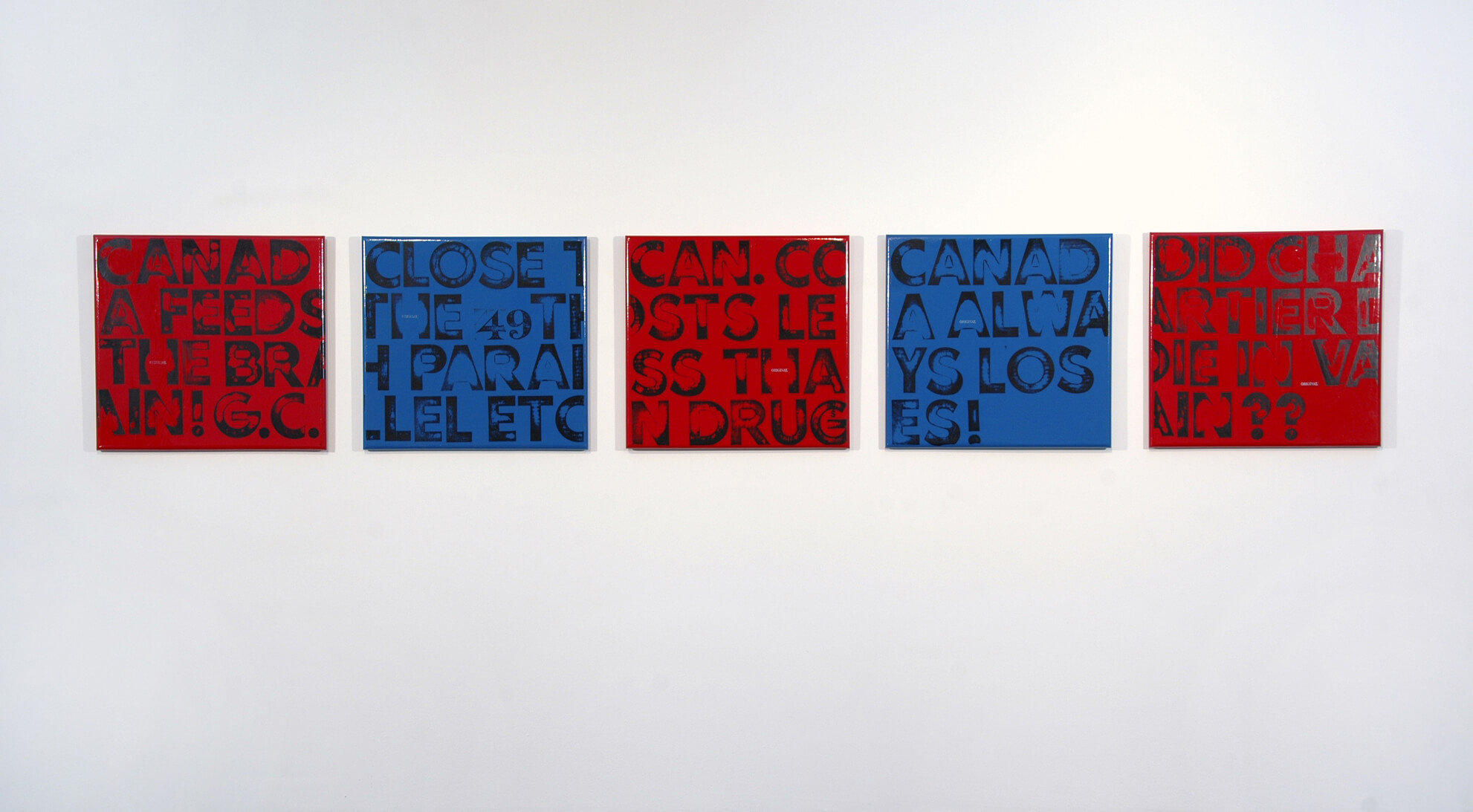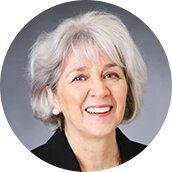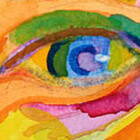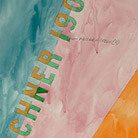The True North Strong and Free, #1–5 1968

Greg Curnoe, The True North Strong and Free, #1–5, 1968
Stamp pad ink and polyurethane on paper on plywood
Five panels, each panel (max.) 60 x 63.5 cm
Museum London

The series The True North Strong and Free, #1–5 was painted immediately after Greg Curnoe’s mural Homage to the R 34, October 1967–March 1968, was removed from Montreal International Airport in Dorval, Quebec. Using large-scale rubber stamps for the first time, Curnoe expresses his reaction to the criticism of his anti-American sentiments and the censorship of his major work, as well as some disappointment: “CANADA ALWAYS LOSES!”
Curnoe’s phrase “CLOSE THE 49th PARALLEL ETC,” an allusion to the geographic line that forms the international boundary between part of Canada and the United States, is characteristic of his developing pro-Canadian, anti-American stance and it caught the imagination of other nationalists at a time of debate about increasing American influence on Canada. For example, editor Ian Lumsden used it as the title of a 1970 anthology Close the 49th Parallel etc: The Americanization of Canada. Curnoe also put this phrase (in both English and French) on his first Mariposa bicycle and further developed this theme in his satirical Map of North America, 1972.
Curnoe had used rubber-stamped texts in his work right from the start of his career. As early as 1961, he sometimes eliminated images in favour of text, probably under the influence of both Dada and Kurt Schwitters (1887–1948). These works might describe the view out his studio window, or list words on his mind. Art critic John Noel Chandler was the first to note that Curnoe had been doing Conceptual art before the term was used to describe the explosion of text-based art later in the 1960s.

 About the Author
About the Author
 More Online Art Books
More Online Art Books
 Acknowledgements
Acknowledgements